第5章 CHAPTER I(5)
Mary had been present at the battle, and the calm and courage she displayed had made a lively impression on her wild defenders, who all along the road had heard her say that she would have liked to be a man, to pass her days on horseback, her nights under a tent, to wear a coat of mail, a helmet, a buckler, and at her side a broadsword.
Mary made her entry into Edinburgh amid general enthusiasm; for this expedition against the Earl of Huntly, who was a Catholic, had been very popular among the inhabitants, who had no very clear idea of the real motives which had caused her to undertake it: They were of the Reformed faith, the earl was a papist, there was an enemy the less; that is all they thought about. Now, therefore; the Scotch, amid their acclamations, whether viva voce or by written demands, expressed the wish that their queen, who was without issue by Francis II, should re-marry: Mary agreed to this, and, yielding to the prudent advice of those about her, she decided to consult upon this marriage Elizabeth, whose heir she was, in her title of granddaughter of Henry VII, in the event of the Queen of England's dying without posterity. Unfortunately, she had not always acted with like circumspection; for at the death of Mary Tudor, known as Bloody.
Mary, she had laid claim to the throne of Henry VIII, and, relying on the illegitimacy of Elizabeth's birth, had with the dauphin assumed sovereignty over Scotland, England, and Ireland, and had had coins struck with this new title, and plate engraved with these new armorial bearings.
Elizabeth was nine years older than Mary--that is to say, that at this time she had not yet attained her thirtieth year; she was not merely her rival as queen, then, but as woman. As regards education, she could sustain comparison with advantage; for if she had less charm of mind, she had more solidity of judgment: versed in politics, philosophy, history; rhetoric, poetry and music, besides English, her maternal tongue, she spoke and wrote to perfection Greek, Latin, French, Italian and Spanish; but while Elizabeth excelled Mary on this point, in her turn Mary was more beautiful, and above all more attractive, than her rival. Elizabeth had, it is true, a majestic and agreeable appearance, bright quick eyes, a dazzlingly white complexion; but she had red hair, a large foot,--[Elizabeth bestowed a pair of her shoes on the University of Oxford; their size would point to their being those of a man of average stature.]--and a powerful hand, while Mary, on the contrary, with her beautiful ashy-fair hair,--[Several historians assert that Mary Stuart had black hair; but Brantome, who had seen it, since, as we have said, he accompanied her to Scotland, affirms tat it was fair. And, so saying, he (the executioner) took off her headdress, in a contemptuous manner, to display her hair already white, that while alive, however, she feared not to show, nor yet to twist and frizz as in the days when it was so beautiful and so fair."]--her noble open forehead, eyebrows which could be only blamed for being so regularly arched that they looked as if drawn by a pencil, eyes continually beaming with the witchery of fire, a nose of perfect Grecian outline, a mouth so ruby red and gracious that it seemed that, as a flower opens but to let its perfume escape, so it could not open but to give passage to gentle words, with a neck white and graceful as a swan's, hands of alabaster, with a form like a goddess's and a foot like a child's, Mary was a harmony in which the most ardent enthusiast for sculptured form could have found nothing to reproach.
This was indeed Mary's great and real crime: one single imperfection in face or figure, and she would not have died upon the scaffold.